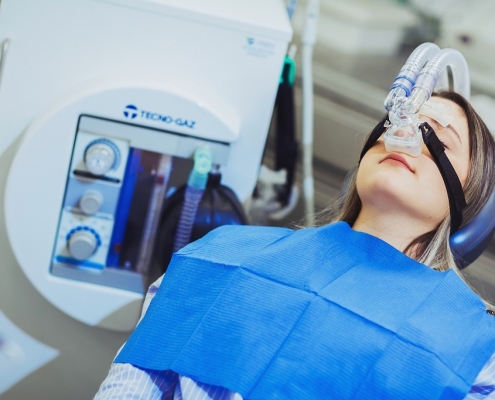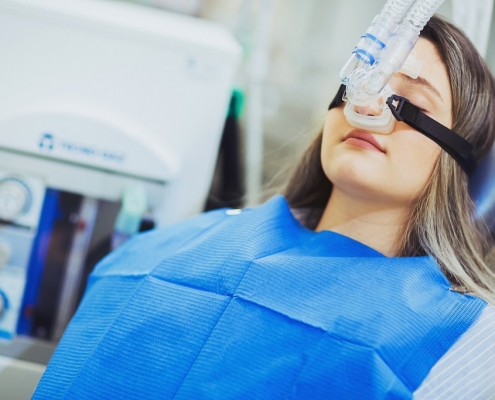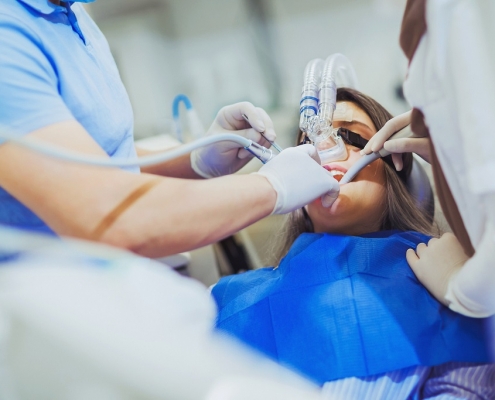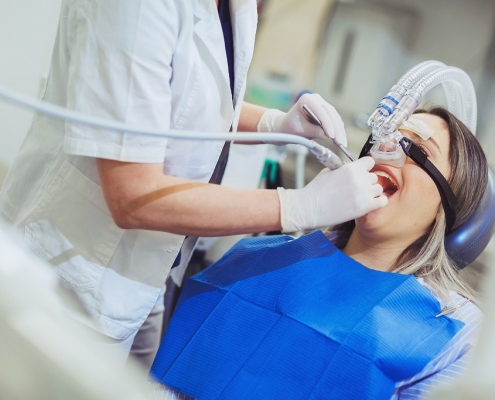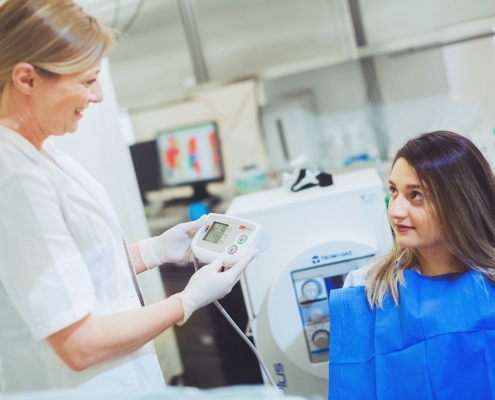Sedation with laughing gas is an excellent option for patients suffering from dental anxiety. The inhalation sedative will help you become calm and relaxed in the dentist’s chair.
Common in America and Scandinavia
Laughing gas (nitrous oxide) sedation has been around for more than 150 years: Experimental applications date back to the 18th century, and in 1844, an American dentist performed the first tooth extraction under laughing gas sedation. Today, the US have remained a stronghold of dental sedation with laughing gas: Almost every dentist will happily perform this gentle anaesthesia. In the Scandinavian countries as well as in the Netherlands, laughing gas sedation is well established and regarded very positively due to it’s few side effects. In contrast, the method had been all but forgotten in the German speaking countries, and has only been experiencing a comeback during recent years.
Lauging gas benefits
Injecting a local anaesthetic into the gums will get rid of the pain. However, for quite a number of patients, dental fear remains even after the anaesthesia. This unpleasant sensation has the undesirable property to perpetuate itself: Once you have been sitting in the dentist’s chair all tensed up, with your heart pounding in your throat, your body will immediately remember and reproduce that feeling whenever you face a similar situation, i.e. at your next appointment. Laughing gas has the power to break this vicious circle.
Laughing gas has a slightly numbing effect on pain. Its main effect however is the creation of a deeply relaxed, anxiety-free state. All bodily symptoms of stress and fear – pounding heart, racing pulse, shivering, cold sweats – vanish. Patients with a strong gagging, coughing or swallowing reflex will benefit, too: These excessive reactions of the body to the perceived intrusion subside unter the influence of laughing gas. At the same time, you remain conscious and responsive. You breathe on your own, you are all there, hearing, seeing and understanding what happens to you and around you. There will be no gap in your memory. Only the fear is gone. It is replaced by a feeling of indifference, of complete, pleasant relaxation. By the way: No laughing fits, if the dosage of the gas is correct…
You can get further Informations about the costs of a laughing gas treatment in our download section(german only) or directly in our Practice in 1010 Vienna.
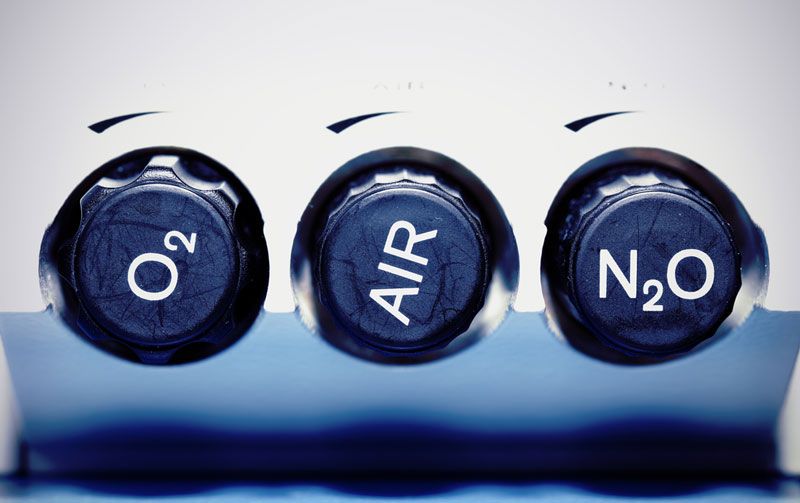
How the sedation with laughing gas is performed
There is no need to forgo food and drink for longer periods of time prior to your appointment, as with general anaesthesia. Still, we recommend you don’t eat or drink for two hours before the procedure. A mixture of laughing gas and pure oxygen is inhaled via a nosepiece. We start with pure oxygen and increase the percentage of laughing gas stepwise over a couple of minutes. The final gas mixture can contain up to 70 percent laughing gas and will be finetuned continuously during your treatment. Your pulse and blood oxygen are monitored with a pulse oximeter that is clipped to your finger. The sedation will take effect after a few minutes. If our goal is to “merely” address your fear, laughing gas sedation is enough. For potentially painful treatments, we will generally supplement the sedation with the injection of a local anaesthetic.
Thus, you will experience no discomfort at all – even the injection prick will be hardly noticeable. If the treatment is complete, the remaining laughing gas will be flushed from your lungs with a few breaths of pure oxygen. After about 15 minutes you will be good to go. If you wish to, you can even steer your car or hop on your bike…
Who benefits from laughing gas sedation?
- Generally everyone with dental anxiety
- Children aged four years and over
- Patients with a strong gagging or swallowing reflex
- There are no reports of allergic reactions to laughing gas.
- Laughing gas is the ideal sedation for asthma patients with dental fear – the gas does not irritate the respiratory tract, and the elimination of fear and stress prevents asthma attacks during the treatment
- Laughing gas is not metabolized, but rather leaves the body unchanged via the lungs – kidneys and liver are not involved. That’s a big plus for patients with diseases of those organs.
Generally, laughing gas ist the most gentle sedating agent during pregnancy, and it is even administered during childbirth. There are no reports about negative effects of the gas on mother or fetus. Still, with pregnancy and medication, you should always weigh your options very carefully, particularly in the first and second trimester.
In these cases we don’t recommend laughing gas sedation
Laughing gas has a tendency to collect in body cavities. On these grounds, there are three absolute contraindications:
- Pneumothorax
- Ileus (bowel obstruction)
- Recent eye operations where part of the vitreous body has been removed (vitrectomy)
- Chemotherapy with Bleomycin. In combination with the chemotherapeutic agent Bleomycin laughing gas is toxic for the lungs.
- Drug addiction. A manifest opioid dependency decreases the effectiveness of laughing gas.
- For patients suffering from Chronic Obstructive Pulmonary Disease (COPD), laughing gas sedation may reduce the respiratory drive.

